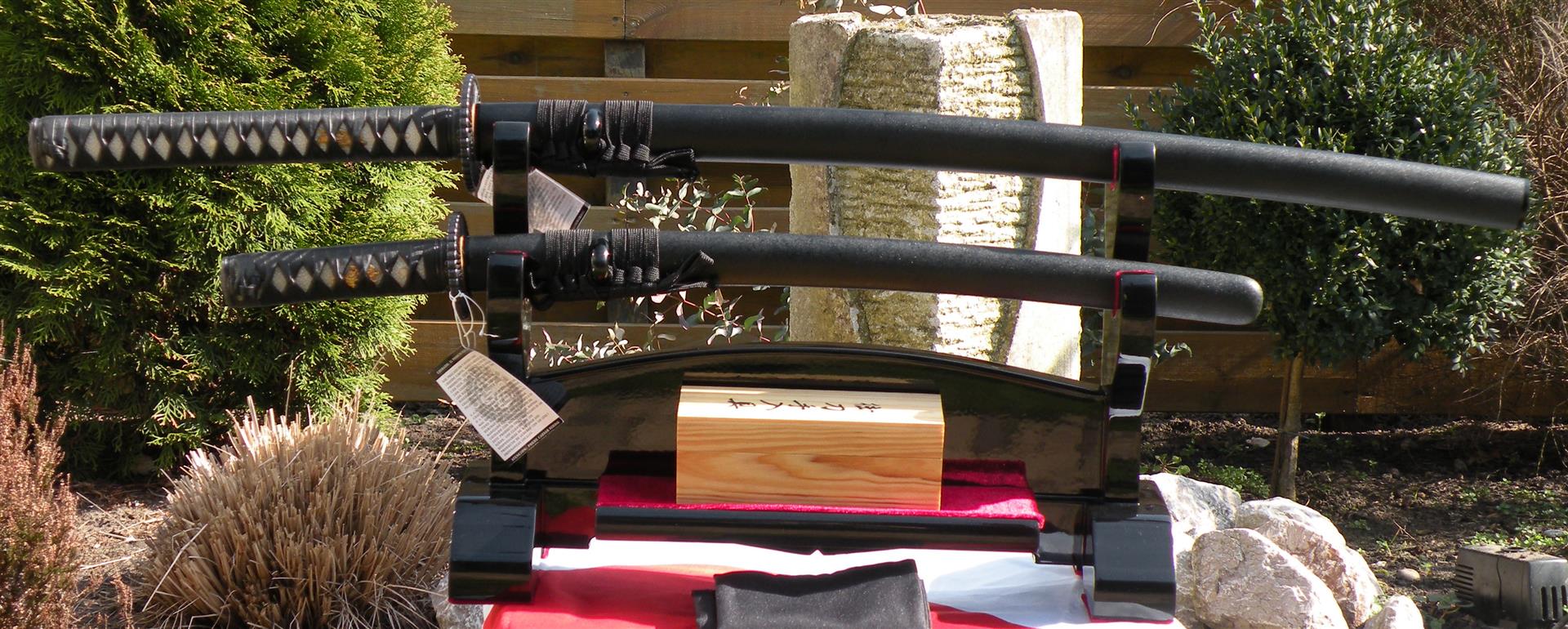Samurai Sword Standard Etiquette
When people come to me to buy a katana it often included a stand of katana kake as well. The question oftenly asked is what a historically correct way is to exhibit a katana and wakizashi.
In Japanitself they never used a stand to put on a katana for a long time, because the best and most secure way to exhibit your precious katana is simply not to do that.
They are usually kept in shira-saya (plain white saya and tsuka), in a case and a tansu ( mobile storage box ).
If you have bought a katana in my shop or you want to buy, and you still want to maintain the traditional sword etiquette you can follow next guidelines.
I make a distinction between a Tachi (this is sword with a deep curve that was used mainly by the samurai on horseback ) and Katana ( japanese sword of the samurai , also called Daito). Of course you have more Japanese swords but I am leaving those aside, such as a Chokuto and Odachi .
Usually you can assume that the swords are showed the way they are worn. So the Tachi with the Ha-Saki (cut) down and the katana and wakizashi with the Ha-Saki (cut side) up.
The position of the handle side reflects your attitude and intention, the idea behind this that if the handle is on the left side you can slower grab it because most people are right handed. You would have to turn the sword and this will take some time. So from a peaceful attitude, it is advisable to turn the tsuka (handle) on the left. This gives the signal that the visit is welcome without hostility and menace.
The Ha-Saki (cut) of the katana is upwards, this ensures there is no pressure is exerted on the saya. With this way you can avoid cracks in the Saya with all the dangers you can think of. Also there will be no damage occur at the Ha-Saki (cut) in this way, because that is something you obviously want to avoid at all times.
Do you have multiple swords, so a long sword (Daito) and short sword (shoto or wakizashi) you frequently call them a Daisho. Traditionally a Daito (katana) is usually placed above a Shoto (wakizashi).
So the Tachi goes with the Ha (cut) down and also with the handle to the left.
Keep also in mind the "climatic" conditions, often said, but again, keep your katana in the oil. The steel will begin to oxidize in contact with moisture and air, the best is just room temperature without extreme outliers .
In Japan, there are always "exceptions" but if you take a stand in use, you can assume those rules I mentioned are common sword etiquette.
Our Japanese Sword Stands are perfect for displaying your sword sets. We all have them in stock and the stands we sell from Hanwei all have a velvet coating on the bearing points.


